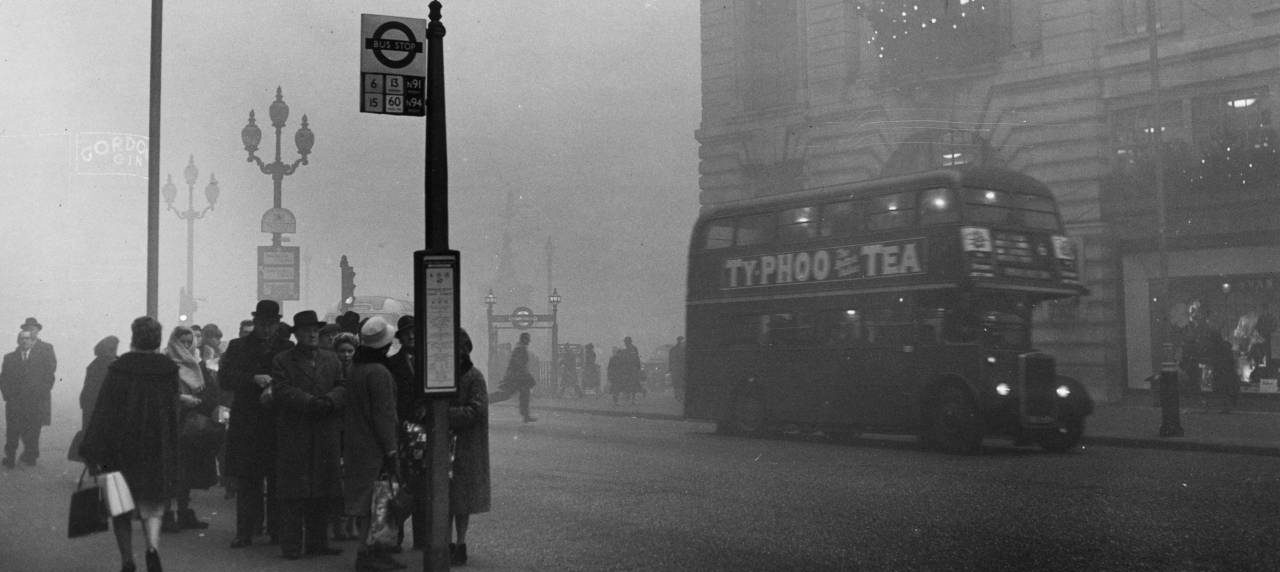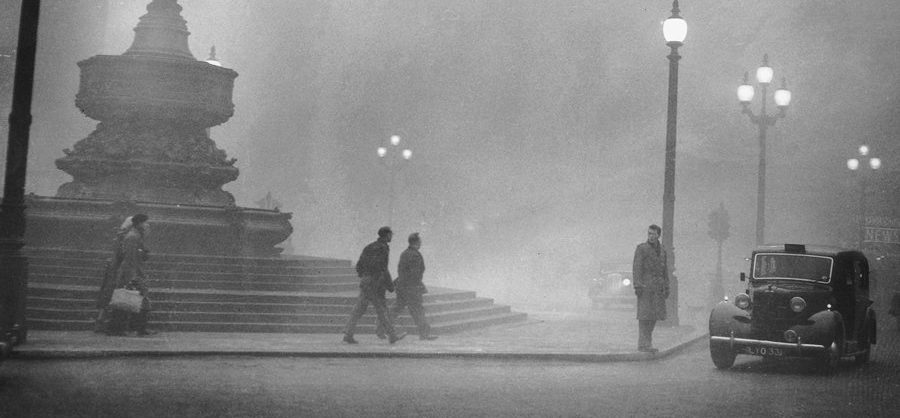
Cities have traditionally been dirty places, and London was for a long time the biggest, dirtiest and most polluted city in the world. It was Edward I, the medieval king, who first passed laws limiting the burning of sea coal in London in an attempt to clean the air. That was back in 1306. [Over 300 years later in 1661, John Evelyn presented to King Charles II a package of measures to deal with the “inconveniency of the smoak of London”. Evelyn expressed the perennial complaint that “the sordid and accursed avarice of some few particular persons should prejudice the health and felicity of so many”, puzzling that humanity “whose very being is Aer should not breath it freely when they may”]
As the industrial revolution kicked off, London gained the unflattering nickname of the ‘Big Smoke’. The situation came to a head in terms of waterborne pollution with the Great Stink of 1858, which trapped members of Parliament in their Palace of Westminster next to the Thames.
Victorian public health measures started to curb pollution. But it was only with the 1952 Great Smog that public opinion turned decisively against air pollution. Smoke from coal burning combined with foggy, wintry conditions to create a thick layer of ‘smog’, which is believed to have killed as many as 12,000 people over a five day period starting on 5 December. The Clean Air Act of 1956 was the result, exactly 650 years after the first attempt to clear the air. By the 1970s, London’s historic buildings could finally be cleaned of the black soot of centuries.
Yet just as pollution from coal was being curbed, another threat was growing from the unconstrained growth in traffic, now the biggest source of airborne pollution. It is the much less visible nitrogen and sulphur dioxide, combined as NOx and SOx, that threatens the health of Londoners as decisively as the visible smog used to. Attempting to tackle climate change by promoting more fuel-efficient diesel led to a surge in air pollution, exacerbated by efforts by some automakers to cheat on the pollution control devices. London also learned to tackle the problem of lead in petrol, by removing it – though the issue took years to resolve.
London’s problems were repeated in cities all over the world. The worst-hit big city in the world is now Delhi – where traffic has been growing inexorably and is a major contributor to very poor air quality, alongside dust from construction, pollution from factories and power stations, the burning of fuel, crops, especially stubble after harvest, and garbage.

In a move to improve things, the Supreme Court in 1998 ordered that public transport shift from diesel fuel to compressed natural gas (CNG) which lowered levels of dangerous ‘particulate matter.’ Other measures including the introduction unleaded petrol and lowering the Sulphur content of fuels also helped. Standards for legally allowable pollution levels from vehicles have also been tightened over time, and penalties introduced for burning rubbish.
But all of these have been progressively overwhelmed by trends like the rise in numbers of vehicles on the roads. In a decade from 2002 to 2012 they practically doubled in Delhi, increasing 97 percent.
The problem has been made all the more disastrous – the kind of disaster that irreversibly damages the lungs of half of all children – by a shortage of effective and non-polluting cooking equipment. A regional dust problem, partly from cement and building plants, also makes matters worse. The Badarpur Power Plant, which opened in 1973, is another major source of pollution. Its influence is made clear by the fact that when air quality drops below a certain level, closing the plant is now one of the emergency measures used to alleviate the problem.

According to the World Health Organisation, India overall now has the world’s highest death rate from respiratory disease and asthma.
Like the great smog in London, Delhi had its own crisis moment in November 2016 with its own Great Smog when particulate matter rose to over ten times the highest acceptable healthy limit.
